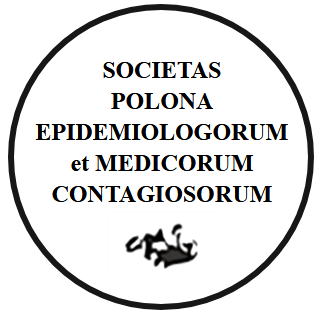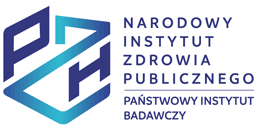RESEARCH PAPER
Salmonellosis in Poland in 2022
1
Zakład Epidemiologii Chorób Zakaźnych i Nadzoru, Narodowy Instytut Zdrowia Publicznego PZH – Państwowy Instytut Badawczy
Submission date: 2025-03-25
Final revision date: 2025-04-02
Acceptance date: 2025-04-25
Online publication date: 2025-04-29
Corresponding author
Małgorzata Milczarek
Zakład Epidemiologii Chorób Zakaźnych i Nadzoru, Narodowy Instytut Zdrowia Publicznego PZH – Państwowy Instytut Badawczy, Chocimska 24, 00-791 Warszawa
Zakład Epidemiologii Chorób Zakaźnych i Nadzoru, Narodowy Instytut Zdrowia Publicznego PZH – Państwowy Instytut Badawczy, Chocimska 24, 00-791 Warszawa
KEYWORDS
TOPICS
ABSTRACT
Background: Gram-negative, relatively anaerobic bacilli of the genus Salmonella (with the exception of serovars S. Typhi and S. Paratyphi) cause a disease called salmonellosis. These infections most commonly manifest as self-limiting gastroenteritis. In developed countries, the most common source of Salmonella infection is food of animal origin, particularly eggs, meat and dairy products.(2,3)
The number of human cases caused by Salmonella bacteria in 2022 remained stable compared to 2021 and has not returned to the level before the COVID-19 pandemic.(4) Objective: The aim of this article is to analyze the epidemiological situation of salmonellosis in Poland in 2022, compared to previous years. Material and methods: The analysis was carried out on the basis of individual data on salmonellosis cases and data on foodborne disease outbreaks entered into the EpiBaza and ROE systems, NIZP-PZH-PIB bulletins and articles, data from the ECDC and data from the Central Statistical Office. Results: In 2022, 6,575 cases of salmonellosis were registered in total, 6,256- intestinal, 319- extra-intestinal. The incidence was 17.4/100 thousand population. The percentage of hospitalizations due to salmonellosis was 64,9%. 40.2% of the salmonellosis cases were in children aged 0-4 years. PSSE registered 263 salmonellosis outbreaks. Conclusions: We are observing a significant increase in the number of tests for Salmonella and Shigella performed by PSSE, compared to 2021 and 2020, which may indicate a return to the diagnostic efficiency from before the COVID-19 pandemic.
A slight increase in cases of the disease was observed among people of Ukrainian nationality living in Poland, which is the result of a wave of refugees from Ukraine.
We process personal data collected when visiting the website. The function of obtaining information about users and their behavior is carried out by voluntarily entered information in forms and saving cookies in end devices. Data, including cookies, are used to provide services, improve the user experience and to analyze the traffic in accordance with the Privacy policy. Data are also collected and processed by Google Analytics tool (more).
You can change cookies settings in your browser. Restricted use of cookies in the browser configuration may affect some functionalities of the website.
You can change cookies settings in your browser. Restricted use of cookies in the browser configuration may affect some functionalities of the website.





